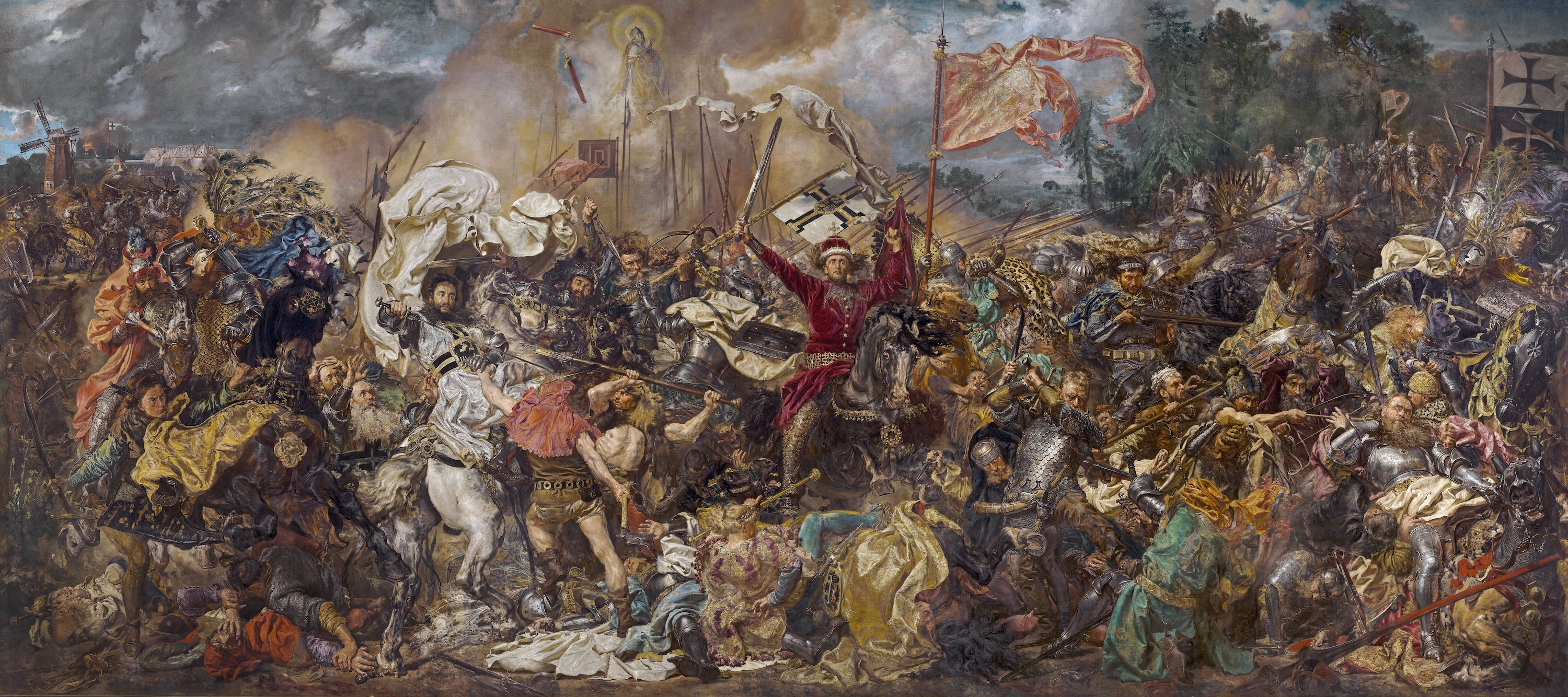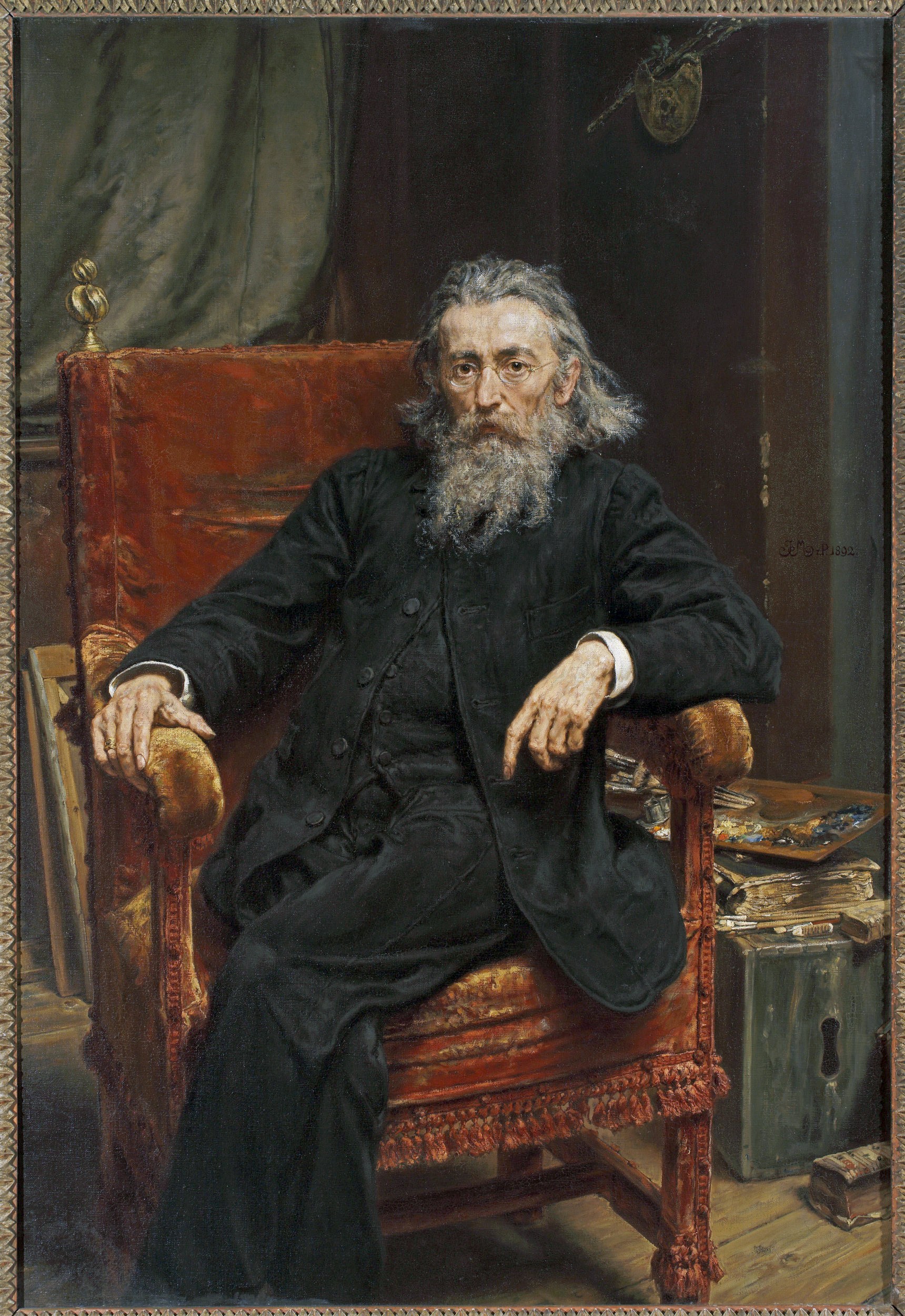This is the most famous painting in Poland.
The Battle of Grunwald depicts the final phase of the battle fought on the fields of Grunwald on 15 July 1410 between the joined Polish, Lithuanian and Ruthenian forces and the Teutonic Order aided by Western European knights. Of course, Poland won this battle.
As one of the largest battles in Medieval Europe, it ranks among the most momentous events in the history of Poland. As a result of the triumph of the Polish arms, the power of the Teutonic Knights in Prussia was broken. For Matejko, a distinguished historical painter who regarded his own art as a vital means of creating and maintaining national identity during the hardships of the period of partitions, the subject became a vehicle for conveying a contemporary message. It was, in fact, the time of intensified Germanisation policy imposed by Chancellor Otto von Bismarck against the Poles of the Prussian Partition and of the harsh policy of Russification and repressions after the January Uprising in the Russian Partition.
Matejko envisaged the composition as transporting the spectator into the very centre of the tumultuous battle. In the centre, we see Grand Duke of Lithuania Vytautas the Great, portrayed in red attire, his hands raised in a gesture of might and triumph. As his figure draws special attention, many erroneously take him for King Władysław Jagiełło. The recognition of the figure as Vytautas finds support in the closed princely mitre adorning his head. Władysław, the King of Poland, was pictured deeper in the painting, in its top right corner. He is sitting on a horse in silvery armour, surrounded by his guards. His decision not to take part in the battle, going against the customs of the time, enabled him to execute a successful strategy. The fates of Grand Master of the Teutonic Order Ulrich von Jungingen we can observe in the foreground. He is defending himself against an attack by footmen. One of them is wearing a particularly striking costume, i.e. the executioner’s garb, while holding in his hands the lance of St Maurice, one of the most prominent symbols of royal power in Poland, a relic donated to Bolesław the Brave by Otto III during the Congress of Gniezno. This is a figurative scene aimed to bring about the hope of overcoming and breaking the enemies of Poland. It also signifies the Teutonic Knights’ betrayal of the ideals and policy of Otto III, who once saw an ally in the Polish ruler. On the right side of the canvas, we may recognise the Black Knight - Zawisza Czarny in a blue coat, attacking with his lance, commonly considered to epitomise the ideal of the medieval knight. Many of the figures represent knights who, indeed, fought in the fields of Grunwald.
As it is enormous and very detailed, we highly recommended to see it in the full screen to zoom all the details :)


 Jan Matejko
Jan Matejko